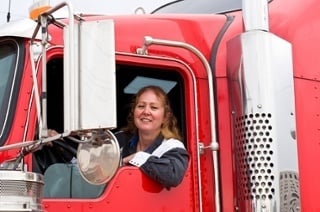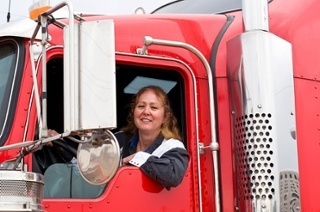How Women are Changing the Fuel and Fleet Industry

 There is little doubt that the fuel, fleet management and trucking industries have been historically dominated and continue to be dominated by men. There is also little doubt, that women are increasingly changing the workplace dynamics of those industries. Although women may not be shattering the glass ceiling (yet), women are certainly putting a significant number of cracks in it.
There is little doubt that the fuel, fleet management and trucking industries have been historically dominated and continue to be dominated by men. There is also little doubt, that women are increasingly changing the workplace dynamics of those industries. Although women may not be shattering the glass ceiling (yet), women are certainly putting a significant number of cracks in it.
If you need convincing, just take a look at these numbers regarding small business ownership across multiple industries, and it is apparent that the glass ceiling is indeed becoming weaker.
Although men continue to dominate small business ownership at 71 percent, a 2015 report from the Institute of Women’s Policy Research (IWPR) shows that small businesses owned by women are steadily on the rise. Twenty-nine (29) percent of America’s small business owners are women—a figure that represents a 68 percent growth in women-owned firms since 2007, compared with just a 47 percent growth for all businesses.
Livia Whisenhunt, Founder, President and Chief Executive Officer of PS Energy is one of those 29 percent. A trailblazer in the fuel industry—specifically transportation and emergency fuel and fleet management services—Livia founded PS Energy in 1985. Under her leadership, the company has grown into one of the top-diversity and women-owned companies in the nation.
On top of that, Livia’s leadership and commitment to supplier diversity have helped pave the road to success for other women and minority-owned small businesses, as evidenced by her numerous awards, including the Edison Electric Institute Supplier (EEI) Diversity Award and recognition as Hispanic Business Woman of the Year by the Georgia Hispanic Chamber of Commerce.
Says Livia, “Women helping women through organizations such as the Women Business Enterprise National Council, help empower WBE’s to make a difference in industries that are typically male dominated. Little by little, we are cracking the glass ceiling—succeeding and thriving.”
No doubt women are increasingly making inroads in the above-mentioned male dominated industries. For purposes here, let’s take a closer look at one of those—trucking—to get a pulse on carriers putting more women in the driver’s seat.
Eliminating Roadblocks for Women in Trucking
The severe shortage of drivers in the US trucking industry is no secret, with the shortfall of drivers on track to nearly quadruple by 2025. To that end, fleet operators have been putting incentives in place to target select groups, including women.
As of 2015, women represented just 6 percent of the US truck driver population (roughly a third of the overall trucking industry workforce are support staff and office managers). The good news for women drivers is that the figure represents a 4.5 percent increase over a 5-year period and is only expected to grow. One reason is that the trucking industry is one where gender is not as much of an issue in equal pay, since women make relatively the same amount as their male counterparts and are, thereby, attracted by the salary potential. What is also attractive to women are the job challenges and the “on the road” freedoms, as well as boosts in pay and tuition reimbursement programs offered by many carriers.
Another way the trucking industry is making strides to attract more women drivers is by modifying trucks to make them more operator friendly to women. For example, carriers are upgrading fleets with models that feature automatic transmissions, have driver cabs with ergonomic changes to better accommodate body types of varying sizes, and provide better access to oil and fuel ports through better design.
As more and more women get behind the wheel, some carriers are finding that women often outperform their male counterparts in several key areas, including safety and customer relations, making it “good business sense” for bringing women onboard.
Global transportation provider, Werner Enterprises, found that their female drivers have about a 25 percent lower accident cost, which President and Chief Executive Officer, Derek Leathers, attributes to their greater attention to detail, more focus and concern that, as he puts it, “….is something they bring to the party that just makes them better drivers.”
Ellen Voie, Founder, President and CEO of Women in Trucking Association (WIT) is finding this true for other carriers, “What carriers are telling me is that they want more female drivers for the safety issue and ... women are often better with the customers, paperwork, better with the equipment and often easier to train.” Sorry fellas.
WIT is helping carriers shape the future by creating (in 2014) a Girl Scout badge to educate young girls about careers in transportation. You can never start too early to help fill in the driver shortage or get more women involved in fleet management.
Sometimes it just takes a woman’s touch.